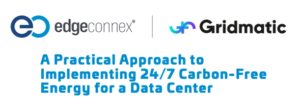Thirty-three percent of utility and energy companies worldwide have begun to pilot generative artificial intelligence in their operations, according to a survey released by digital think tank Capgemini Research Institute. The study also found these facts to be true of AI in the energy sector:
- Almost 40% of utility and energy companies have established a dedicated team and budget for regenerative artificial intelligence in energy and utilities, while 41% say they have taken a “watch and wait” approach to the technology.
- 95% of utilities and energy companies said they have discussed the use of generative AI in the past year.
- A third of survey respondents in the energy sector said they are testing the ability of generative AI to create realistic datasets that can be used to shorten development timelines.
- Early adopters of AI in the energy sector say the industry has only begun to experiment with the AI use cases with the greatest potential.
What is regenerative AI?
Unlike traditional AI systems, regenerative AI is self-improving, more dynamic, and include more sustainable frameworks. It goes beyond simple algorithms and instead incorporates machine learning and data analytics to constantly improve its functionality.
EdgeConneX was featured in a Utility Dive article, ‘A Third of Utilities Have Begun to Pilot Generative AI for Customer Service, Other Uses: Report’, that shared these insights and trends. Read below for an excerpt:
While utilities are generally conservative in their adoption of new technologies, they are keeping pace with most other industries when it comes to the rise of generative AI, according to Doug Ross, vice president of data and insights for Capgemini. Energy and utility companies that participated in Capgemini’s survey were on pace in their adoption of generative AI with other industries. Although ChatGPT intensified public awareness of generative AI, the technology itself has been around in various forms for at least three years, Ross said. Ross continued by saying, these companies tend to see generative AI use cases in utilities as having the potential to accelerate growth, rather than posing a potentially disruptive threat.


“EdgeConneX had been using annual renewable energy credits to offset its energy use for a couple of years, but wanted to take sustainability goals to the next level.” – Anand Ramesh, Senior Vice President of Advanced Technology for EdgeConneX
EdgeConneX’s initial goal was to match 80% of electrical use with hourly clean energy by the end of the two-year period without significantly increasing their energy costs. The regenerative AI has nearly achieved that goal within the first few months and should approach 90% by the end of the year, exceeding expectations. Supplying 24/7 clean energy is just one of three AI use cases that have emerged since Gridmatic began working with artificial intelligence six years ago to optimize bidding in wholesale energy markets, Leesa Lee, chief marketing officer for Gridmatic, said. The company has also seen success using AI to optimize the operation of energy storage assets and to help manage demand-side efficiency programs. While there is a place for AI chatbots and the like in customer service, AI’s greatest potential benefits will be realized elsewhere.
“The customer-facing, front-line impacts will probably be much more apparent and much more immediate,” Lee said. “But there will be deeper things that will potentially be more hidden, and will have greater impact.”
Read the full Utility Dive article HERE.
Learn more in the EdgeConneX 24/7 Carbon Free Energy whitepaper HERE.
Post updated with additional information on June 14, 2024.

